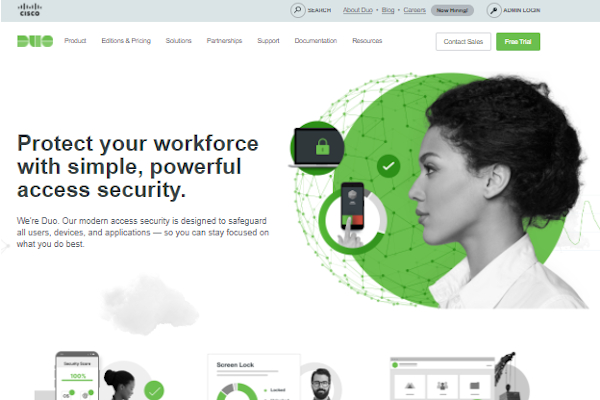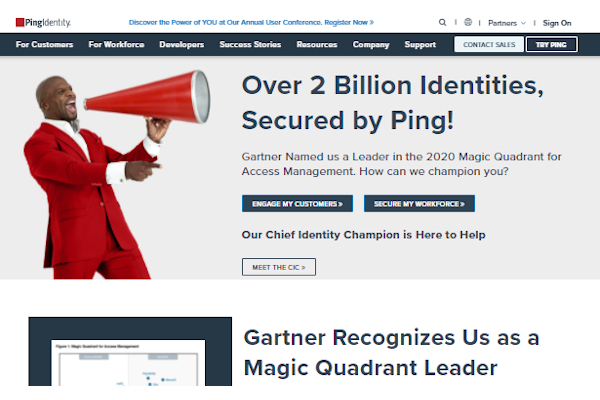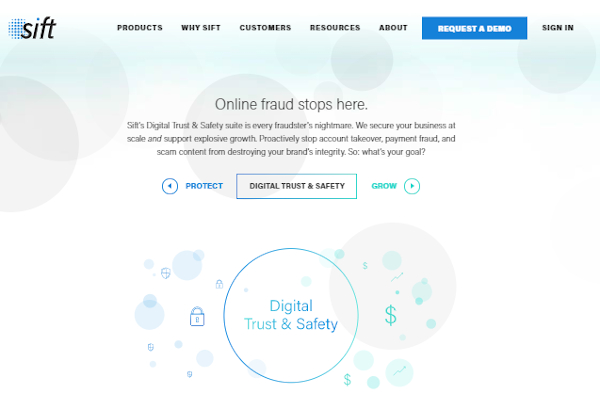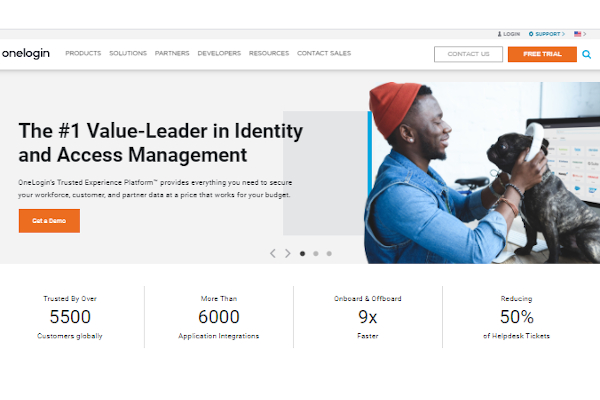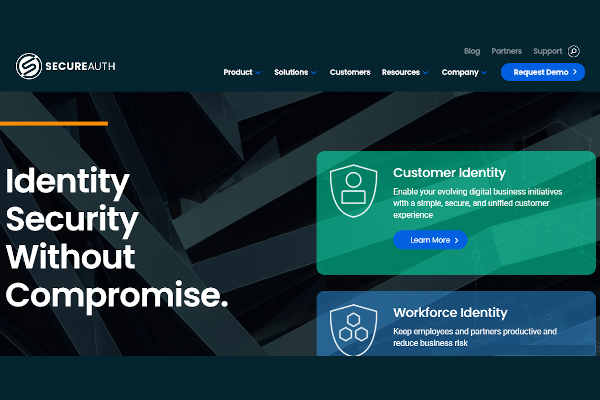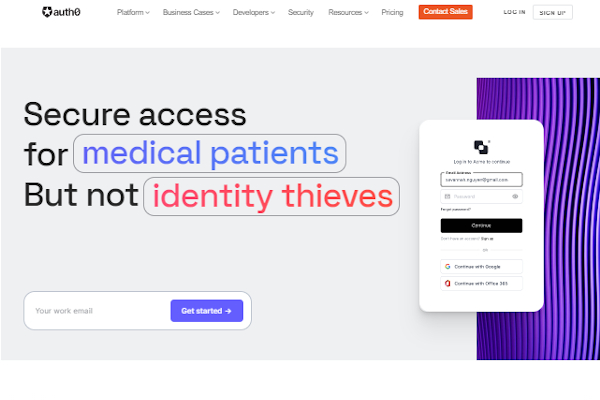The number of people who need access to vital systems and data expands quickly as firms onboard more mobile and remote employees, partners, contractors, and other external users. While growing connectivity improves operational efficiency and productivity, it also opens up new attack routes for intruders and hackers. Risk-based Authentication is a technique for enhancing account security on websites without requiring users to utilize two-factor Authentication.
bb_toc content=”][/bb_toc]
11+ Risk-Based Authentication Software
1. Duo Security
2. Kount
3. Ping Identity
4. Okta Adaptive Multi-Factor Authentication
5. Sift
6. OneLogin
7. RSA Adaptive Authentication
8. Symantec VIP
9. SecureAuth
10. Auth0
11. Silverfort.io
12. Pindrop Protect
What Is a Risk-Based Authentication Software?
Identity management technologies that weigh user factors in determining and identifying threats are known as risk-based authentication (RBA) software. RBA software is used by businesses to improve the efficiency of user governance and authentication procedures. Users who are deemed to be at a higher risk must give additional authentication information. These look at IP addresses, devices, habits, and identities to create unique authentication methods for each user seeking to connect to the network. Non-suspicious users who access applications from known devices, locations, and networks may be signed in automatically. To adequately authenticate their identity, suspicious users may be forced to give SMS code, biometric verification, or email confirmation steps. Multi-factor authentication capabilities are standard in risk-based authentication technologies, although they have their own set of criteria based on the administrator’s settings.
Benefits
Building an effective Risk-Based Authentication methodology requires doing a risk assessment. Also, the type of risk that the organization may face must be defined. Some of the benefits of using RBA are as follows:
- Reduces threats and enhances database security
- Risk assessment flexibility
- An alternative to more traditional security mechanisms
- Cost-effective
Features
Risk-based authentication is a critical security technique since it works in real-time to prevent cyberfraud while causing minimal inconvenience to legitimate clients. While the fraud detection system generates the transaction risk score, risk-based authentication allows you to alter authentication methods on the fly based on the level of risk. RBA makes rapid decisions about which authentication methods to use and what combinations are risk assessment tools. Here are some of the needed features:
- Real-time threat data must be available to identify potential security threats.
- The user’s context, which includes their device, location, and network bandwidth, should be analyzed.
- The ability to require users to provide additional authentication factors should be available to authenticate their identities.
Top 10 Risk-Based Authentication Software
1. Duo Security
Duo Security is a trusted access platform that provides enterprise applications with cloud-based two-factor authentication, endpoint repair, and sign-on tools. They have a $259 million revenue and 800 employees.
2. Kount
For the retail, finance, and telecom industries, Kount creates an AI-based platform that delivers data loss prevention and accounts takeover protection solutions. They make $42 million in revenue and employ 200 people.
3. Ping Identity
Ping Identity provides identity management and single sign-on software to improve IT security and secure mobile access. They generate $500 million in revenue and employ 900 people.
4. Okta Adaptive Multi-Factor Authentication
Okta’s single sign-on, authentication, provisioning, mobility management, and reporting solutions are all interconnected. They make $835 million in revenue and employ 2,806 people.
5. Sift
Sift is a fraud prevention platform established in California that provides organizations with account security, payment authorization, and other related services. They make $42 million in revenue and employ 200 people.
6. OneLogin
OneLogin provides online applications with cloud-based identity and access management solutions such as single sign-on and multifactor authentication. They generate $60 million in revenue and employ 287 people.
7. RSA Adaptive Authentication
RSA is a cybersecurity platform established in Massachusetts that provides businesses with fraud protection, incident response, governance risk, and compliance management solutions. They have a $627 million revenue and 3,000 employees.
8. Symantec VIP
Symantec is a cybersecurity software and service provider based in the United States. They make $366 million in revenue and employ 576 people.
9. SecureAuth
SecureAuth is a company that provides enterprises with single sign-on, adaptive speed control, and identity management solutions. They have a $97 million revenue and 176 workers.
10. Auth0
Auth0 creates an identity authentication platform for the banking and media industries, including user management and corporate integration solutions. They make $136 million in revenue and employ 650 people.
FAQs
What does RBA mean in terms of security?
RBA is applying changing levels of stringency to authentication processes based on the risk that access to a particular system will result in its compromise. In a breach, the most critical systems are at the greatest danger of severe damage.
What is risk-based access, and how does it work?
Risk-based access allows access decisions and enforcement to be made based on a transaction’s dynamic risk management or confidence level. Risk is calculated using behavioral and contextual data analytics in risk-based access.
What is the purpose of a static authenticator?
Static authentication makes use of the same authenticator every time (e.g., static password). This method of authentication only protects against attacks if an imposter cannot obtain the authenticator.
Risk-based authentication technologies have dominated the conversation on identity management technology. The natural next step in managing user information and data privacy in real-time is risk-based authentication (RBA). To improve RBA efficacy, providers will continue to offer new embedded authentication methods and use machine learning. It isn’t the be-all and end-all solution for identity and access management, but it is a step forward in securing the personal information of usual citizens.
Related Posts
10+ Best Trust Accounting Software for Windows, Mac, Android 2022
10+ Best Patient Portal Software for Windows, Mac, Android 2022
13+ Best Virtual Reality (VR) Software for Windows, Mac, Android 2022
12+ Best Bed and Breakfast Software for Windows, Mac, Android 2022
15+ Best Resort Management Software for Windows, Mac, Android 2022
14+ Best Hotel Channel Management Software for Windows, Mac, Android 2022
12+ Best Social Media Monitoring Software for Windows, Mac, Android 2022
10+ Best Transport Management Software for Windows, Mac, Android 2022
10+ Best Other Marketing Software for Windows, Mac, Android 2022
10+ Best Top Sales Enablement Software for Windows, Mac, Android 2022
8+ Best Industry Business Intelligence Software for Windows, Mac, Android 2022
10+ Best Insurance Agency Software for Windows, Mac, Android 2022
10+ Best Leave Management Software for Windows, Mac, Android 2022
10+ Best Mobile Event Apps Software for Windows, Mac, Android 2022
10+ Best Online CRM Software for Windows, Mac, Android 2022

